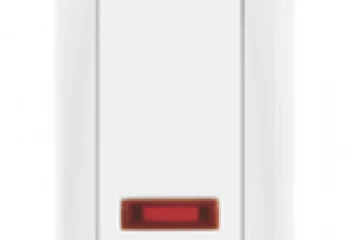The tobacco industry faces many challenges, including product counterfeiting and strict government regulations. To protect consumers and brands, manufacturers are using advanced security features in cigarette boxes. These modern security elements not only prevent duplication but also build trust among users. Below are the most important security features used in today’s cigarette packaging.
Holographic Seals and Labels
Holographic seals are one of the most trusted methods for ensuring cigarette box authenticity. These labels are designed with three-dimensional patterns that change appearance when viewed from different angles. They are hard to duplicate due to the complex light refraction they use.
Manufacturers apply holograms on cigarette boxes as a visual assurance to consumers. If a pack doesn’t have this feature, it could be fake. Holographic seals also help retailers easily identify real products from counterfeit ones. This ensures that only original cigarettes reach the customers.
Another important aspect of holographic labels is their tamper-evidence. Once applied, they cannot be removed without showing signs of damage. This prevents reuse of original packaging for fake products. Holographic technology continues to evolve, making it even harder for counterfeiters to keep up.
Some brands use custom-designed holograms with their logos, names, or symbols. These are unique to each company and add an extra layer of security. These custom holograms can also contain serial numbers or hidden messages that only machines can read.
Tamper-Evident Packaging
Tamper-evident packaging plays a big role in cigarette box security. It lets buyers know if the box has been opened or altered. When the seal or tape is broken, it’s obvious that the product may not be safe.
One common method is using a plastic or foil wrap around the cigarette box. This layer must be broken to access the contents. Once torn, it cannot be resealed. This gives consumers a clear sign that someone has tampered with the package.
Some companies also use perforated seals that tear when the lid is lifted. Others use color-changing inks on seals. When tampered with, the ink changes color, making it easy to detect interference.
Tamper-proof stickers and tapes are also effective. They often leave behind a mark or message like “VOID” when removed. This tells both retailers and buyers that the pack has been opened or replaced.
Track and Trace Technology
Track and trace technology is another strong tool used in securing cigarette packaging. It involves assigning a unique identification code to each pack or carton. These codes are usually printed in the form of QR codes or barcodes.
Once scanned, these codes can provide detailed information such as production date, factory location, and distribution route. This helps retailers, government authorities, and even customers to verify the product’s authenticity.
Track and trace is not just for preventing fakes. It also plays a major role in logistics and inventory management. Companies can track the journey of their products from factory to shelf. If a product is lost, stolen, or replaced, it can be easily traced back.
The tobacco industry is required in many countries to use this technology under strict laws. This includes the World Health Organization’s Framework Convention on Tobacco Control, which encourages the use of tracking systems to reduce illegal trade.
Microtext and Guilloche Patterns
Microtext is very tiny text printed on the cigarette box that is invisible to the naked eye. It requires a magnifying glass or a special device to read. This feature is very effective because it’s nearly impossible to copy with standard printers.
Cigarette companies use microtext to hide details such as batch numbers, product codes, or brand names. These hidden texts can serve as identifiers during inspections or investigations.
Guilloche patterns, on the other hand, are complex curved lines or shapes that form detailed backgrounds or borders. They are often used in currency notes and have now made their way into cigarette packaging. These patterns are extremely hard to copy due to their complex geometry.
When used together, microtext and guilloche patterns make packaging highly secure. Even high-quality counterfeiters find it difficult to replicate these features. Both elements work silently in the background, adding strong layers of security without affecting design.
Color-Shifting Inks
Color-shifting inks are special inks that change color when viewed from different angles. This feature is used to make cigarette boxes more secure and hard to fake. Counterfeiters often don’t have access to this type of ink due to its cost and complexity.
When applied to logos, seals, or brand names, color-shifting inks add a visual layer of protection. Customers can tilt the pack to see the color change and confirm its authenticity.
These inks work using light refraction or specific pigments that react to angle and light. Sometimes they shift from green to blue or gold to red. This feature is not just eye-catching but also highly secure.
Color-shifting inks can be added to other security features like barcodes, stamps, or logos. This makes it very tough for fake products to copy all the details correctly. The slightest error in ink behavior makes the fake easy to spot.
Another benefit is that this feature doesn’t require any special tools for verification. Customers can simply look at the pack to check for the color change. This ease of use makes it popular among both brands and consumers.
Invisible UV Printing
Invisible UV printing is a stealth feature used in cigarette box security. The print is only visible under ultraviolet light. This allows manufacturers to hide security marks without affecting the visible design of the package.
UV printing can include logos, serial numbers, dates, or verification symbols. These can be checked using UV scanners, commonly available in quality control units or customs offices.
This type of printing is very hard to replicate. Counterfeiters often miss it entirely, as it cannot be seen in normal light. This gives the brand a secret tool to verify the packaging.
Some companies also use UV ink that glows in a specific color under light. This makes it easier for officials to confirm a product’s originality without opening the box.
RFID Tags and Smart Labels
RFID (Radio Frequency Identification) tags are an advanced solution in cigarette box security. These small chips can store a lot of data, such as product ID, location, and movement history.
When a reader passes near the pack, it reads the chip and displays the information. This helps in both tracking and verifying the item. RFID tags are widely used in warehouses and retail stores for real-time updates.
Smart labels combine traditional barcodes with RFID technology. They offer a digital method of authentication, especially useful for large-scale manufacturers and distributors.
This tech also helps in recalling specific products if there is an issue. Brands can isolate a bad batch quickly and pull it from the market, avoiding bigger problems.
To explore more features of secure and premium packaging options, visit for more: https://ibexpackaging.com/cigarette-boxes/.
Security Barcodes and QR Codes
Barcodes and QR codes are not new, but they now play a bigger role in cigarette box security. These codes can hold much more data than before, and modern scanners can read them instantly.
Barcodes can include batch numbers, production details, and supply chain routes. QR codes can take the user to a website where they can check product details, such as the manufacturing date or origin.
This system allows real-time authentication. Retailers can scan the pack before putting it on the shelf. Consumers can scan it at the store to confirm it’s not fake.
Another benefit is traceability. If a product is recalled, the exact batch can be found quickly through barcode scanning. This improves safety and brand accountability.
Cigarette brands are investing in secure barcode systems to stop counterfeit activities. When used with other features like UV prints or color-changing inks, barcodes become even more effective.
Conclusion
Security features in modern cigarette boxes have come a long way. From simple seals to advanced RFID tags, packaging now plays a key role in protecting both brands and consumers. The inclusion of advanced technology ensures that only genuine products reach the end-user. As regulations tighten and counterfeit risks grow, strong and smart packaging is not just an option—it’s a must for survival in today’s market.



